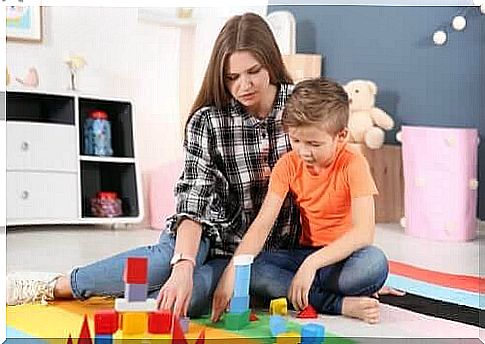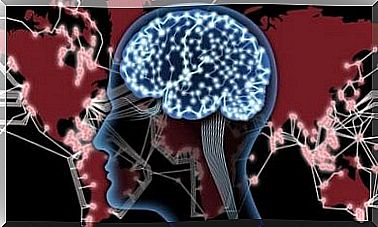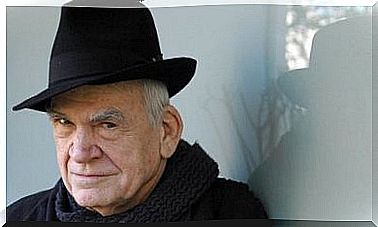Psychological Treatments Of Autism

Today, there are several treatments for autism in both children and adults on the autism spectrum. Some have a solid scientific basis and show results, but others are less successful or only work with people who fit a very specific profile.
We also know that effective psychological treatments for autism are evidence-based and both integrative and holistic.
Austrian psychiatrist Leo Kanner was the first to formally recognize autism in the 1940s. Kanner studied characteristics typically present in autism, such as:
- isolation
- language problems
- limited communication
- an obsession with a stable environment
The exact definition of autism is still controversial today. For several years now, the term autism spectrum disorder (ASD) has been used to classify a broader group of disorders that share clinical features that define “classic” autism.
Autism affects 10 to 15 in 10,000 people. When other conditions such as Asperger’s syndrome are also included, the prevalence rises to 57 in 10,000.
In terms of prevalence by gender, 4 in 5 affected are males, although females tend to have greater intellectual disability. 75% of people with autism have an intellectual disability. In addition, 50% do not speak or have a reduced language ability.

Psychological treatments of autism
Of the many therapeutic options, one thing is certain: no single intervention program works for everyone with autism. In fact, no therapeutic treatment is truly valid, even for the same person during different stages of their development.
What is clear is that behavioral interventions are the best psychological treatments for autism. They all rely on the applied analysis of behavior to specify the needs of that particular person and then modify the behavior to be modified.
Theoretical foundations for the behavioral treatments of autism
- The principles of learning are universal and so apply to people with and without autism in the same way.
- It is not necessary to know the etiology of autism to apply behavioral techniques (Lovaas, 1993). However, this contrasts with theories based on the purported mechanisms of autism.
- Autism is a syndrome with tendencies toward certain behaviors and an excess of others. Although there is a neurological basis, the behaviors are susceptible to change due to the organized interaction with a predetermined environment.
The general objectives for intervention are:
- developing communication skills that allow them to better understand other people and understand their relationships and actions
- reduce behaviors that hinder or complicate emotional stability and independence
In recent years, several programs have provided compelling empirical evidence. Discover them below.
Psychological Treatment for Autism: Applied Behavioral Analysis
Applied Behavior Analysis (also called Applied Behavior Analysis and abbreviated ABA) uses scientific knowledge about learning. This is to develop pedagogical techniques for relevant behaviors to be encouraged in the social sphere.
Most people think that global behavioral interventions attempt to instruct the subject through a list of techniques over a period of time. However, what this method really does is promote certain skills through one or a number of different techniques. Both types of interventions are considered equally effective.
The three basic principles of the ABA model of intervention are:
- Analysis. Progress is evaluated from the starting point of the interventions and by measuring progress.
- Behaviour. This is based on the scientific principles of behavior.
- To apply. Applied principles of the observed behavior.
On the other hand, the most common elements in global interventions are the following:
- The learning environment is controlled and structured.
- The persons who work with the patient focus treatment on all domains of competence and individuality, based on the patient’s deficits and excesses.
- The procedures of applied behavioral analysis are used.
- One or more therapists perform the treatment.
- The treatment lasts 34-40 hours per week.
- Therapists select short-term goals according to normal development.
- Therapists create a set plan for generalization and maintenance.
- The patient must first learn some skills in order to be able to learn other skills later.
- Language learning is the primary goal.
- Learning through repetition or through mistakes increases negativity, behavioral changes, and demotivation. So mistakes are avoided.
Results of global interventions
Among the various interventions, ABA as a treatment for autism also shows results in the following areas:
- An accelerated development, with an improvement in IQ of up to 20 points. It allows patients to reach a normal level.
- It can improve adaptive behavior to a normal level.
- It can also eliminate autistic features such as self-stimulation, self-harm, and stereotyping, among others.
- Language acquisition is possible for the majority of children, usually from about the age of five.
- Behavioral improvements and social skills are common.
- The students can go to regular schools.
- The results persist in the following years.
Variations in Global Intervention Influencing Effectiveness
Behavioral treatment studies have shown that certain data may indicate some differences in treatment effectiveness, namely:
- The earlier the intervention starts (preferably before the age of four), the greater the possibilities for integration into a mainstream school.
- The more intensive, the more effective. However, the needs may differ depending on the child.
- If there is an improvement in the first year, it will be in the second. Progress can continue at the same pace, even two years later.
- Behavioral therapy produces better results than any other treatment.
- The quality of the training of instructors, educators and parents does not seem to influence the results. Certain studies involved experts who were not necessarily experts in the field of autism.
- The cooperation between parents showed the best maintenance and generalization of the results.
- The treatment protocol is anchored in the knowledge of the psychological characteristics of people with autism.
Psychological treatments of autism: specific interventions
Many studies have used behavioral interventions to determine success from the basic prerequisites necessary for learning to the most complex behaviors, such as language.
However, one of the key findings of behavioral interventions in autism is this: the less disruptive behaviors (such as self-stimulation), the greater the opportunity for learning.
Researchers drew two conclusions in this area, namely the following:
- When a child with autism is not allowed to answer a certain question on a test, he will divide his answer among the other items.
- As the disruptive behavior decreases, children’s opportunities to learn increase.
Research has attempted to elucidate how disruptive behavior is self-perpetuating, namely through negative reinforcement, positive reinforcement, or the absence of another stimulus.
The main conclusion is that to reduce disruptive behavior, it is not effective to focus directly on stopping or reducing them. One of the most efficient strategies to eliminate this behavior is thus differential reinforcement of other behaviors.
Concrete techniques aimed at teaching social, language and reading skills, as well as academic skills, are the focus of treatment.
Psychological treatment of autism: naturalistic developmental behavioral interventions (Koegel et al., 1998)
Several current studies based on behavioral intervention use a more “natural” focus on development. This is a big difference with the more traditional interventions, which are based on ABA.
Recently developed interventions for preschoolers, for example, consist of placing them in natural and socially interactive environments. During routine and daily games, and from the very beginning of the intervention, the child directs the learning situation.
These interventions based on empirically tested methods have their foundation as much in the principles of learning as in the science of development. They arose as a result of the problems with more traditional methods based on discrete repetitions for the generalization of learning.
There are several methods that aim to find a more natural method, namely:
- incidental teaching
- pivotal response training
- environmental teaching
- natural language teaching
According to these schools of thought, this is how autistic children develop language and communication.
These interventions are based in part on the principles of the interactive processes arising from the developmental models, ABA, and the importance of parent-child interaction.

Psychological Treatments of Autism: The Pragmatic Evolutionary Model (Prinzant and Wetherby, 1998)
This model emphasizes pragmatic and social development. It emphasizes the need to focus on preverbal and verbal language, as well as communication skills in general.
In addition, it works on reducing the problems associated with imitation, and on the particularities of the sensory process.
In addition, it emphasizes a natural socio-pragmatic context, insists on family participation and recommends the integration of work in pairs.
This is also all facilitated by the following processes:
- construction of intentionality
- waiting for a turn
- shared attention
- communication initiation skills
Children can thus extend their functionality with different instruments, in a natural context.









